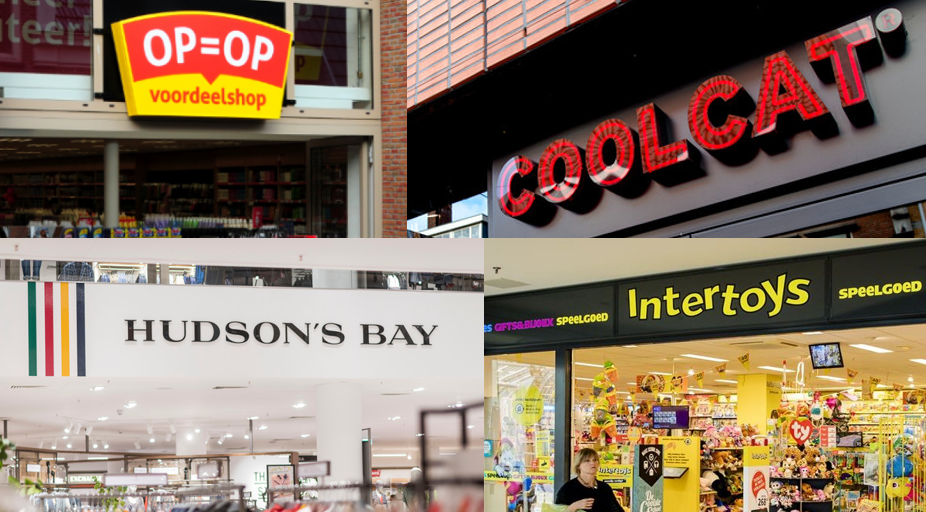Omnichannel Retail: the remedy for bankruptcy
The curtain falls for the Op = Op Voordeelshop. The national discount chain, which has been making losses for years, recently filed for bankruptcy. In an explanation, owner Vincent Alkema said: "We are dealing with 'challenging circumstances' that require continuous adjustment of the store formula and business operations." Could a timely transition to Omnichannel Retail have prevented bankruptcy? That question comes to Op = Op too late. But it is never too late to learn.
These 'challenging circumstances' compel retailers to think about the future. After all, the story of Op = Op Voordeelshop does not stand alone. A long line of bankruptcies preceded it. Everyone remembers the closure of V&D at the end of 2015. Recently, toy chain Intertoys and fashion chain CoolCat announced that they like the water to their lips. The shoe chains Kens and Fred de la Bretoniere also collapsed in quick succession. And it is highly questionable how long Blokker and the new Hudson's Bay will keep their shops afloat.
Retail is growing, but so are the number of bankruptcies
Despite the favorable economic climate with more consumer confidence, 2019 started with thirty bankruptcies in January, according to figures Retailnieuws.nl recently. This included six food shops, three household shops, three leisure shops and one supermarket / department store. There is a paradox here: retail is growing, but the number of bankruptcies continues to increase, with 5% this year, ABN Amro predicts in a recent sector report.
The retail sector is struggling and is undergoing a major transition. Competition is fierce, profit margins are lean. Medium-sized shopping areas, in particular, are experiencing serious vacancy, making them less and less attractive to consumers. It is critical and capricious and - it will not surprise anyone anymore - strongly online. Online non-food sales are increasing year after year. Also the market for online food continues to grow.
Transition to Omnichannel Retail is inevitable
What does this do to our Dutch 'retail landscape'? What will the 'shopping street of tomorrow' look like? Seven out of ten shopping areas in the Netherlands report declining visitor numbers. Municipalities and project developers will have to scratch behind the ear on issues such as scale, composition and diversity. At high vacancy levels, it is inevitable to think about transforming shopping areas into residential areas and from large-scale retail buildings to residential complexes or combined residential / shopping / work complexes, making living in cities feasible for starters again.
Incidentally, there are shopping areas that do well. The sector report cited earlier mentions the center of Geleen and Roermond and the city center of The Hague. Here local authorities, entrepreneurs and real estate owners work together to make their shopping area attractive. They invest in the decoration and in organizing events, markets and festivals. An increasing number of real estate owners offer more flexibility in rental formulas to give young entrepreneurs better starting opportunities and to respond to the trend of a shorter life cycle for small, independent, characteristic shops.
Digital platform as a sign for small-scale shopping area
The physical store does have a future. A striking example is an initiative in Amsterdam, known as 'De 9 Straatjes'. This marks a picturesque, small-scale shopping area in the center of Amsterdam. With 'Unique Selling Points': a worthwhile environment with picturesque monuments, authentic shops and specialized food and beverage outlets. One of the success factors of this 'new shopping area' is it digital platform that the entrepreneurs have jointly developed to put their area on the map.
This shows once again that online and offline can no longer do without each other. Retailers who realize optimal synergy between the online customer journey and the physical shopping experience are at the longest end. The Omnichannel Strategy, at both national and local level, is the future. The physical store is retained in the street scene, but the role is changing. The store location enhances online interaction, as a showroom or experience center, for example, and vice versa.
Tomorrow's store is called Omnichannel Retail
In the shopping landscape of tomorrow it's all about the customer experience. The customer is looking for convenience, relaxation and comparison and choice options and uses multiple channels for this: your webshop, ecommerce platforms such as Amazon and eBay, all kinds of apps and, last but not least, the physical store or outlet. And for every channel, the customer expects the same, consistent brand and product experience. You better adjust to that with an effective omnichannel formula, supported by smart (data) technology. That is the only way to stop the increase in the number of retail bankruptcies!


